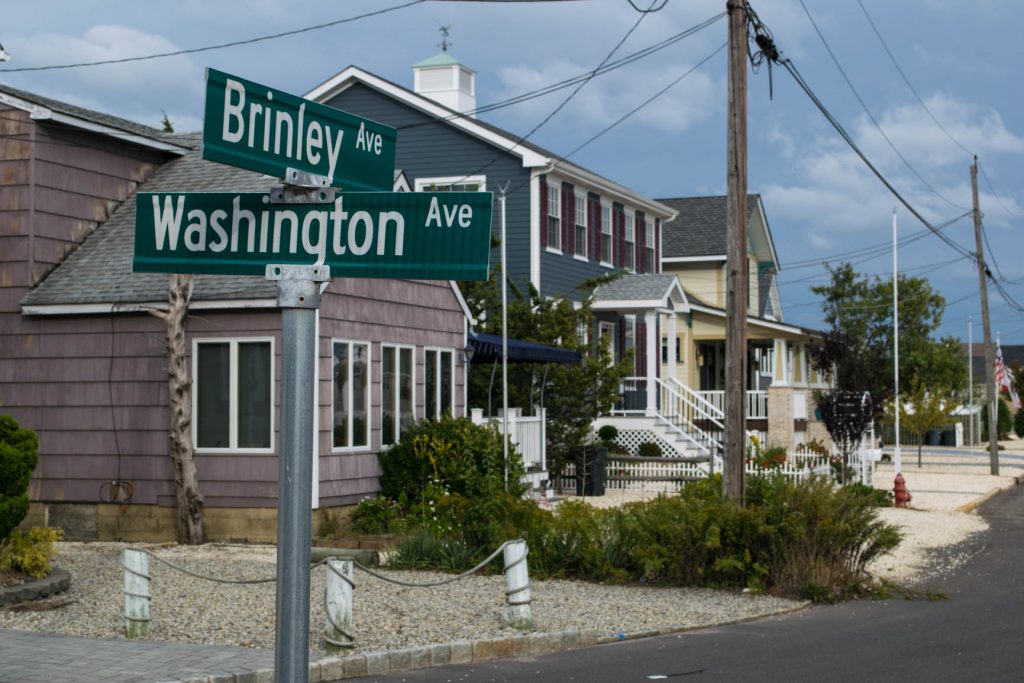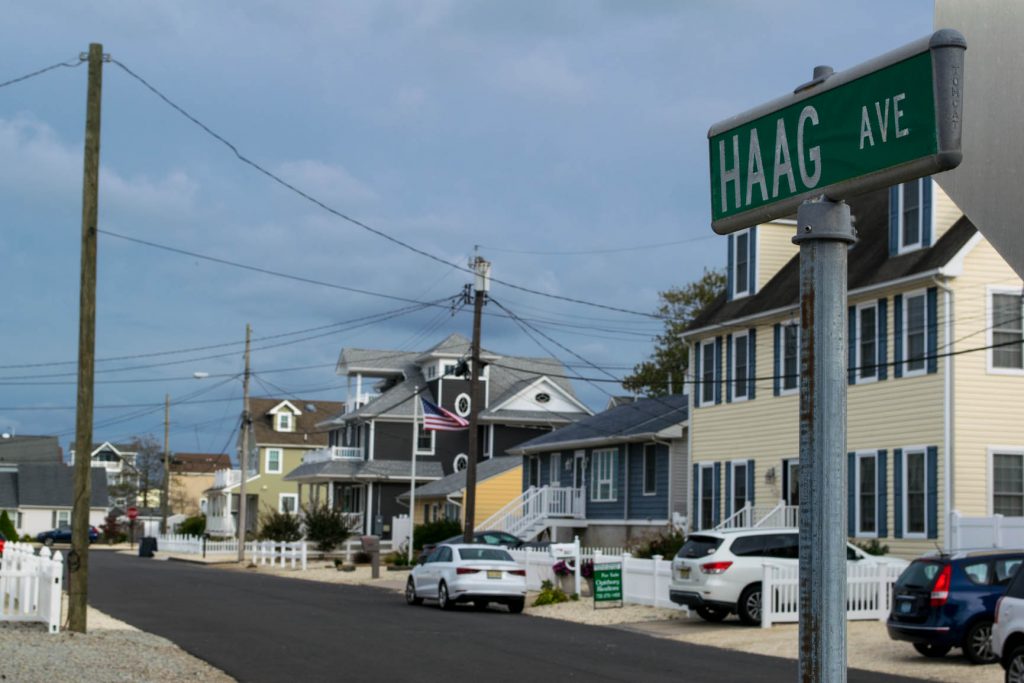
An area of Ortley Beach that is seeking to become part of Lavallette, Oct. 2019. (Photo: Daniel Nee)
Lavallette officials are considering a request by homeowners on several blocks of the northermost portion of Toms River’s Ortley Beach section to secede from Toms River’s jurisdiction and become part of Lavallette.
About 30 residents are interesting in switching towns, according to a letter sent to Lavallette Mayor Walter LaCicero from John Paul Doyle, an attorney who has been engaged by the residents. Switching municipal jurisdictions is exceedingly difficult in New Jersey, as Toms River would likely vehemently oppose the move since Ortley Beach includes real estate that carries some of the highest property values in the township – all while using township schools to a lesser extent than the mainland.
Doyle was successful in one of the extremely rare victories in this regard when Bay Beach Way, once part of Toms River’s north beaches, became part of Lavallette despite Toms River waging a legal battle against the switch. The residents at the time, represented by Doyle, argued that they were cut off from the remainder of Toms River, their business community was located in Lavallette and many of the nearest emergency services were located in Lavallette.
The newest request to switch jurisdictions would include:
- The south side of Brinley Avenue.
- The south and north sides of Haag Avenue.
- Both sides of Bay Boulevard between Brinley and Haag avenues.
- The south side of Trenton Avenue between Baltimore and Washington avenues.
- Washington Avenue between Brinley and Haag avenues.
In a letter from Ortley Beach residents Jennifer Branagh to Doyle, she writes that most of Haag Avenue is populated by year-round residents.
“Everything we do is in Lavallette,” she wrote. “It’s our whole community.”
In order for an area of one town to become part of another, the new town must accept the succession and the former town must accept the secession. In most cases, however, the town on the losing end engages in a protracted legal battle to prevent the change, especially if they successfully convince a court that residents are “tax shopping” and looking to switch jurisdictions to a town with a lower tax rate.
In the case of Ortley Beach, becoming part of Lavallette would significantly lower residents’ property tax burdens. Most properties are assessed higher than the township average of $272,380, meaning Ortley residents generally pay higher taxes than their mainland neighbors. Ortley residents also pay a property tax to a Toms River fire district, but receive fire services from Seaside Heights under a flat rate contract. Residents also face their highest tax burden from the Toms River Regional school district, which includes numerous towns with average values lower than Toms River as a whole.

An area of Ortley Beach that is seeking to become part of Lavallette, Oct. 2019. (Photo: Daniel Nee)
By contrast, the same homes in Lavallette would likely be about average on the tax scale or even below average, plus Lavallette operates its own K-8 school district and sends its high school students to Point Pleasant Beach, another town where property values would be closer to those of Ortley. Lavallette currently has New Jersey’s second-lowest property tax burden statewide.
Still, Toms River has invested millions of dollars in recent years rebuilding Ortley Beach after Superstorm Sandy, including street raisings and repavings and the replacement of the sewerage system. The township council is currently considering a request to purchase the former Surf Club property.
There is no guarantee that Lavallette would accept the request. LaCicero said at a council meeting Monday night that taking on the additional territory may not gel with Lavallette’s layout.
“There are no curbs,” said LaCicero, of the proposed blocks. “There are 50-by-50 [foot] lots that are nonconforming.”
LaCicero also said he fears Toms River would use its “domino theory” argument it employed during the Bay Beach Way litigation and claim that residents were simply looking for a lower tax burden, which could cause more island communities to move away from mainland jurisdictions. In Toms River’s case, about one-fifth of the total tax revenue collected comes from the barrier island.
LaCicero said he “will tell them we will consider it upon review of statistical information.”
Trenton Avenue, in particular, is a frequent source of controversy since the street is literally divided between the two towns. On the north side, residents receive Lavallette services, their children attend Lavallette Elementary School and Point Pleasant Beach High School, and generally see lower tax bills. LaCicero said public works crews even have to keep their snow plows to the north side since the south side isn’t part of their jurisdiction. Some properties contained in the latest request even have one portion of their land located in Toms River and another in Lavallette. In the past, this discrepancy has caused confusion when it comes to noise complaints and other ordinance enforcement actions.
There have long been efforts to unlink island communities with mainland communities that residents say have different needs and priorities. A “Free Ortley Beach” movement has been established on and off over the years (including directly after Superstorm Sandy struck in 2012), seeking to make Ortley its own municipality, or to have the entire section join Lavallette. South Seaside Park is also in the midst of an attempt to leave Berkeley Township – a half-hour ride away by car – and join neighboring Seaside Park.

Advertisement

Ortley Beach & North Beaches
Landmark Ortley Beach Breakfast Spot Looks to Expand

Ortley Beach & North Beaches
‘Temporary’ 70-Foot Cell Tower on Route 35 in Ocean Beach OK’d to Return

Seaside Heights & Seaside Park
Beloved South Seaside Park Restaurant Will Remain Open As Developer Seeks to Demolish Block

Seaside Heights & Seaside Park
In Seaside Heights, A $50M Flagship Building Rises Over the Boulevard in a Famed Location

Police, Fire & Courts
Ocean County Sheriff Establishes Drone Command Center in Seaside Heights Amid New Video





